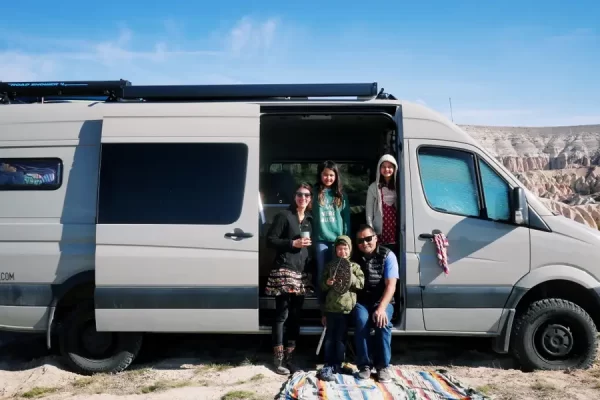Driving a classic car on a road trip can be a fun and exciting experience. However, it is important to prepare the car properly before going on a long journey.
This includes getting a tune-up and planning a route. It is also important to test the car out on different types of roads and terrain.
What Makes a Car a Classic?
There are a number of factors that go into determining what makes a classic car. Many of these are based on personal opinions and can vary from person to person. The age of a vehicle is one of the most common factors, but it is not the only factor. A car’s history and the significance of its design can also make it a classic. These vehicles often have a cult following and are considered iconic by car enthusiasts. The Ford Capri, for example, was a popular car in the ’70s and ’80s and has since become a symbol of British culture. These cars are often worth more than their original cost and can be an excellent investment for those with the right knowledge.
Many state transportation agencies and car clubs have their own guidelines regarding what can be considered a classic car. In general, these are vehicles that are between 20 and 40 years old and have been maintained according to their original manufacturer specifications. Cars that have been significantly modified may not be considered classics.
Generally, these types of vehicles will not be used for everyday errands or commutes. They are typically only used for car shows or other events that celebrate the vehicle. They can be an excellent choice for a road trip if you’re looking for a fun way to see the sights.
A classic car may be a great choice for a road trip, but you should always check the condition of the vehicle before heading out on the open road. Keeping it in good condition will ensure that you get the most out of your experience behind the wheel and will have a safe ride.
A car that has been properly cared for can be a real pleasure to drive and will not only look great on the road but will also hold its value over time. The value of a classic car may even increase as it ages if it is well-maintained. In addition, these cars are often easier to repair than modern vehicles and can be less expensive to purchase if the owner knows where to shop.
Checking the Car’s Condition
If you’re buying a classic car, it’s worth the extra effort to check the vehicle thoroughly. You’ll want to make sure it is in good condition and that the restoration was done well. This is a way to preserve the value of the car over time. Besides the obvious cosmetic damage, such as scratches and dents, you’ll also want to look for signs of mechanical problems.
This means checking the oil and transmission fluid, inspecting the engine for rust, and making sure there are no leaks in the water tank or radiator. It’s best to do these checks with a companion, such as a friend or trusted mechanic. Having someone to point out small issues can save you from wasting money on something that may not be worth the cost or trouble.
When assessing a car’s condition, it’s important to consider whether or not it has been modified in any way. For example, if the vehicle has been fitted with modern features such as GPS and MP3 players, this might make it less of a classic car in the eyes of some collectors. This is because these features can detract from the car’s original design and specifications, thereby reducing its value.
Another thing to consider is the car’s mileage. If the mileage is a lot lower than expected, this could be a sign that it’s been clocked or “clocked up” in order to hide its actual age. This will affect its price, and it may also mean that it’s not in as good a condition as advertised.
Aside from determining the car’s overall condition, you’ll want to pay particular attention to the tires. If the tires are worn down or uneven, it might indicate that the car was driven offroad or used for racing. This could mean costly repairs or replacements down the road, so it’s important to keep this in mind when evaluating a vehicle.
It’s also a good idea to check the interior for rips or tears and signs of water damage. If you notice any of these issues, be sure to ask the seller about their repair or replacement costs.
Planning a Route
There are a number of factors to consider when planning a road trip in a classic car. You will need to choose a route that suits your car and your style of driving. You may also want to take into account the climate and conditions of the areas you will be visiting, as these can affect how well your vehicle performs. You should also look at routes that will provide you with extraordinary scenery.
Getting your car ready for the trip is crucial, so it’s worth scheduling an appointment with your mechanic to check over the vehicle and ensure that it’s in good working order. This should include conducting a thorough visual inspection, checking fluid levels, and ensuring that all the tires are at their optimal pressure.
You should also prepare a roadside emergency kit and make sure that you have enough money in case your classic car breaks down along the way. A roadside emergency kit should include jumper cables, a tire gauge, and a spare tire. Having this equipment will help you to stay calm in the event of an accident or breakdown.
Before your road trip, you should also review your classic car insurance policy so that you’re aware of your coverage limits. This can save you a lot of time and hassle in the event that something goes wrong during your journey.
Depending on the age of your classic car, it might not be able to handle long distances without breaking down. If this is the case, you should plan your route to include some breaks. You could also look at finding places where you can stay overnight if this is more practical for your classic car.
If you’re planning a trip to the West Coast, you can take in the stunning views of California’s Route 66. You can stop at Oatman and visit the Wild Burros, a colony of free-roaming donkeys, or brave the heights of Sitgreaves Pass.
A classic car can be a great way to explore the US. However, it requires extra planning compared to a standard passenger car. Whether you’re looking to go on a short or long road trip, you can enjoy the drive-in comfort and style with this beautiful and unique vehicle.
Taking a Test Drive
If you are thinking of purchasing a classic car and want to take it on the road, it is important to do a full test drive before making the purchase. This will give you a sense of how the car drives and how it performs on different types of roads. It will also help you determine whether the vehicle is appropriate for your intended road trip route.
You should take the test drive on a variety of roads, including hills and highways. This will provide a realistic sense of what the car is capable of and can help you identify any potential issues. Additionally, you should allow plenty of time to complete the test drive so that you can ensure you have enough gas for your entire trip.
A test drive is also an excellent opportunity to check the condition of your tires. This includes inspecting for cuts or cracks and ensuring that they are properly inflated. You should also check the treads to see if they are worn out or have any looseness. It is recommended that you replace your tires before embarking on a long road trip in order to avoid a flat tire or an accident.
Another important factor to consider when preparing for a road trip is checking the fluid levels in your classic car. It is important to make sure that you have adequate amounts of brake fluid, coolant, power steering fluid, and oil. In some cases, running out of one of these can be a huge problem and even lead to the destruction of your engine.
While a road trip in a classic car may seem like a risky venture, with proper preparation and maintenance, it can be a very rewarding experience. The Manuscript Division at the Library of Congress has many collections relating to automobile travel, from administrative records mapping out early guidebooks to breathless journals recounting shared adventures.
However, it is important to remember that classic cars are not as reliable as modern-day vehicles. They use technology that was developed decades ago and may not be able to keep up with traffic or weather conditions. It is also important to check your insurance policies before you take a road trip in a classic vehicle. If your premium is high, you may be able to negotiate a lower rate by showing that your mileage is limited and that you store it in a garage during the winter months.











